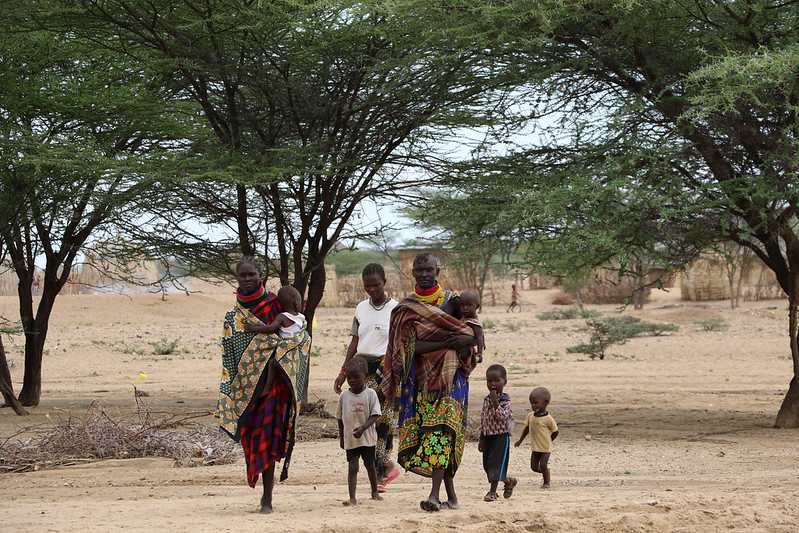4 Aspects of Global Poverty That Lead to Cholera Outbreaks
 Cholera is an acute diarrhoeal disease causing severe diarrhea and dehydration and it can be fatal if left unchecked. With the onset of 2024, the persistence of cholera has become evident. In January alone, across 17 countries in four regions – Africa, the Eastern Mediterranean, the Americas and South-East Asia – 40,900 cases and 775 deaths were reported. Here are five aspects of global poverty that contribute to cholera outbreaks:
Cholera is an acute diarrhoeal disease causing severe diarrhea and dehydration and it can be fatal if left unchecked. With the onset of 2024, the persistence of cholera has become evident. In January alone, across 17 countries in four regions – Africa, the Eastern Mediterranean, the Americas and South-East Asia – 40,900 cases and 775 deaths were reported. Here are five aspects of global poverty that contribute to cholera outbreaks:
Lack of Access to Sanitation and Clean Water
While there have been efforts to address inadequate sanitation through Water, Sanitation and Hygiene (WASH) interventions in the past, there are still challenges. On a positive note, previous studies have indicated that initiatives like extensive media outreach, engagement of community health workers and the provision of essential items such as water purification tablets, soap and oral rehydration solutions have demonstrated efficacy in encouraging behavioral shifts aimed at preventing cholera.
However, the effectiveness of WASH interventions varies across different regions and contexts, especially regarding recontamination. Despite efforts to disinfect water storage containers, a significant percentage of containers are becoming recontaminated at the household level. The distribution of household disinfection kits as an alternative presents the potential to diminish social stigma and empower households to uphold hygiene practices. Yet, additional evaluation is required to confirm their efficacy. Additionally, more research is needed to evaluate the effectiveness of WASH interventions during cholera outbreaks and inform international policy and practice.
Unplanned Urbanization
Unplanned or unmanaged urbanization often refers to the rapid and unplanned growth of urban areas without adequate planning, infrastructure and governance. In the context of public health, the consequences of unplanned urbanization are profound, particularly concerning the spread and impact of infectious diseases like cholera.
It is important to note that cholera outbreaks primarily impact impoverished communities characterized by low socioeconomic status. Particularly vulnerable are individuals living in densely populated regions with restricted access to safe water and sanitation facilities – the overcrowding in these regions is exacerbated by unplanned urbanization.
Therefore, the lack of urban planning often results in disparities in access to health care services, exacerbating the burden of disease on already marginalized populations. Reducing unplanned mass urbanization would require a multifaceted approach that addresses both the underlying drivers of urbanization – including weak governance, unaffordable housing and a lack of investment in infrastructure – and the consequences of rapid and disorderly urban growth.
Food Insecurity
Currently, a negative correlation exists between national food security levels and annual incidences of cholera. In a cross-sectional survey investigating the relationship between food insecurity and cholera in rural Haitian households, it was found that moderate and severe household hunger were significantly associated with a history of cholera. Certain high-risk behaviors were identified as potential mediators of the association between food insecurity and cholera.
These behaviors include the consumption of food and beverages prepared outside the home, the use of antacids and the consumption of leftover non-reheated food items. Household food insecurity was positively associated with these high-risk behaviors, indicating a potential pathway through which food insecurity may increase the risk of cholera transmission.
Interventions targeting food insecurity may help reduce the prevalence of high-risk behaviors and subsequently lower the incidence of cholera in vulnerable populations. Future longitudinal and qualitative research can be done to investigate the relationship between food insecurity, high-risk behaviors and cholera risk further. By addressing and understanding underlying socioeconomic determinants such as food insecurity, public health initiatives can disrupt the transmission dynamics of cholera outbreaks and alleviate the burden of this preventable disease in resource-constrained settings.
Vaccine Shortages
More recently, there was a significant scarcity of Oral Cholera Vaccines (OCV) globally from January 2023 to January 2024, impacting the ongoing cholera response efforts. Within this timeframe, 14 countries urgently requested 76 million doses of OCV, yet only 38 million doses were accessible. The depletion of the OCV stockpile was exacerbated by Shantha Biotechnics’s exit from the market in 2023.
This left the stockpile solely reliant on EuBiologics, a South Korean company, which faced challenges in meeting the unpredictable demand and low pricing associated with vaccine production. However, EuBiologics aimed to produce 35 million doses of the current vaccine and potentially 15 million more if the World Health Organization (WHO) prequalifies its new vaccine.
Despite the temporary shortage, there are prospects for increasing vaccine production in the coming years, with other manufacturers expected to enter the market. However, achieving the Global Task Force on Cholera Control’s target of reducing cases by 90% by 2030 requires sustained efforts, including long-term preventive vaccination programs and the previously mentioned improvements in WASH infrastructure.
Overall, the devastating impact of cholera outbreaks underscores the urgent need for collective action to address the underlying vulnerabilities and ensure access to essential health care services for affected populations.
– Avery Fuller
Photo: Flickr
